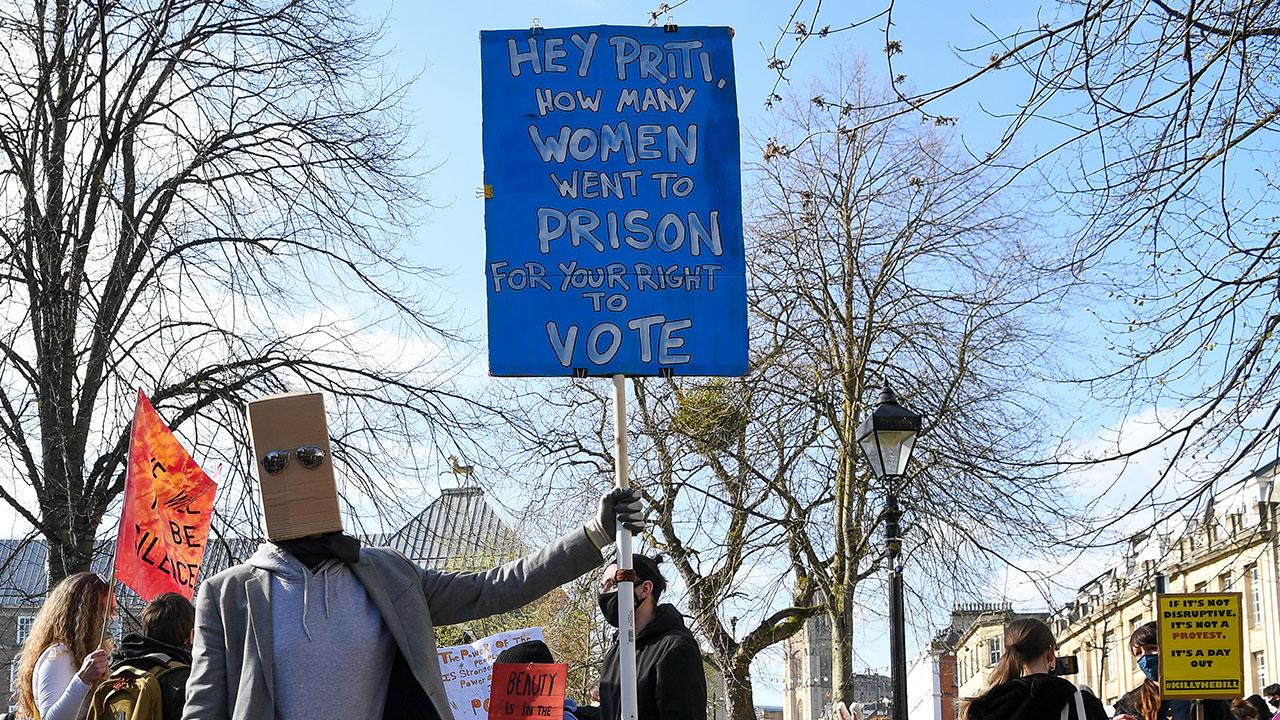How Europe Used Surveillance to Command the Middle East
At the Mosaic Rooms in London, Heba Y. Amin traces colonial footprints in the Arab world through communication technologies
At the Mosaic Rooms in London, Heba Y. Amin traces colonial footprints in the Arab world through communication technologies

Heba Y. Amin’s first UK solo exhibition, ‘When I See the Future, I Close my Eyes’, presents a series of projects that explore history as a method of storytelling. In The General’s Stork (2016–ongoing), for instance, Amin draws on a 2013 incident in which Egyptian authorities detained a migratory stork, fitted by European zoologists with an electronic tracker, on suspicion of espionage. The artist traces the origins of this curious episode back to archival photographs of Cairo’s British Imperial Governor, Viscount Allenby – who led the Egypt Expeditionary Force during World War I – with his pet stork. Having received an order from British Prime Minister David Lloyd George to non-violently seize control of Jerusalem from the Ottomans by Christmas 1917, Allenby commanded his troops to drop flyers over the city from planes – at that time, still a relatively rare sight – demanding in Arabic: ‘Surrender the city! Allenby.’ Thanks partly, it is speculated, to his name translating as The Prophet, the scheme remarkably worked. Framing Allenby’s warfare tactics within the context of his winged pet, Amin uncovers the dynamics of Britain’s reconnaissance missions and Europe’s colonial footprint in the Middle East. A book, also called The General’s Stork (2020), which the artist co-edited with the show’s curator, Anthony Downey, has been published in tandem with the exhibition.

In Operation Sunken Sea: Relocating the Mediterranean, Inaugural Speech (2018–ongoing), Amin convincingly takes on the persona of a quasi-dictator addressing her citizens. Referencing memorable quotes from autocratic leaders, she pitches a solution to the so-called migration crisis: flooding parts of the African continent with the Mediterranean Sea, a concept first proposed in 19th-century European geo-engineering projects. Amin’s research led her to uncover a similar idea in Jules Verne’s Invasion of the Sea (1905), which follows European engineers seeking to regenerate an actual 1874 French proposal to create an inlandSaharan Sea from the Mediterranean by way of a Tunisian canal. In the 1920s, German architect Herman Sörgel proposedconjoining Africa and Europe as one continent, Atlantropa, by constructing a dam across the Strait of Gibraltar. Although promoted as a peaceful, utopian project, Atlantropa was, in fact, a mercenary undertaking intended to benefit Europe by plundering African resources. Even as recently as 1957, the CIA put forward the idea of diverting the Mediterranean Sea to flood parts of northern Egypt, creating an artificial lake that would supposedly distract Egyptian president Gamel Abdel Nasser from cooperating with the Soviet Union and bring ‘peace’ to the Middle East. Combining elements from all these projects, Amin explores claims of European ownership over the Mediterranean Sea and unpacks the megalomaniacal nature of these techno-utopian visions.

Taking its title from a line in ‘Excellent Birds’ – the song co-written by Laurie Anderson and Peter Gabriel for video artist Nam June Paik’s Good Morning, Mr. Orwell (1984) – ‘When I see the future, I close my eyes’ highlights Amin’s interest in surveillance technology and authoritarianism in a post-digital future. In Project Speak2Tweet (2011–ongoing), Amin explores the extent to which communication technologies create an illusion of egalitarianism. This ongoing multi-channel video installation composes an archive of voice messages recorded by phone during the 2011 Egyptian Revolution, when authorities shut down all access to the internet. Over one weekend, developers created a platform to enable Egyptians to post on Twitter through voicemail. These voice recordings are spliced with images of abandoned urban structures, which captured the sentiment in Egypt at the time. Amin’s work highlights the extent to which developments in communication technology are portrayed under the guise of democratic expression, asking questions about power and control, freedom of speech and access to information.
Main image: Heba Y. Amin, As Birds Flying, 2016, video still. Courtesy: the artist
The reopening date for ‘Heba Y. Amin: When I see the future, I close my eyes’ at The Mosaic Rooms, London, is yet to be announced. The exhibition will continue until 28 March 2021.























